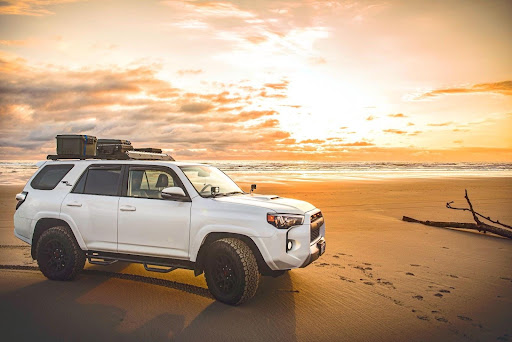Contents
You’re probably looking forward to that road trip you’ve been dreaming about for a long time. You could be driving your car with your newly installed universal roof rack to transport your bike or boat.
Or perhaps you’re using the roof rack’s storage box to keep your family’s belongings together with the camping gear you’re bringing with you on the trip. Whatever your reason for wanting a roof rack, it’s critical to understand the specifics of which type to get – and how to assemble it according to the instructions provided correctly. But, before you do so, keep the following dos and don’ts in mind:
Always carefully read the instructions.
Guys, on the whole, don’t read instructions, and in many cases, that’s fine; you’ll get away with it. However, if you’re installing a roof rack on your car, we strongly advise you to read all of the instructions thoroughly before taking anything out of the box; it will make the job much faster, easier, and safer. Get someone else to assist you as well. You can do it yourself, but it’s much easier with two people. Remember that your car is worth far more than the roof racks you just purchased; don’t ruin it by failing to read the instructions!
Before you travel, double-check everything.
You are checking to ensure that you have all the necessary tools to secure the roof rack. Carry out the roof rack installation process with care and precision to avoid missing a step.
Seek professional assistance when transporting heavy luggage, as accidents occur when the entire procedure is taken lightly. Getting all of the aid ensures proper balance, especially on the wheels.
A thorough check is required for both long and short-distance travel. Anchors come in handy when transporting various types of luggage, including bulky items. They allow the luggage to stay in place, preventing damage to the vehicle and injuries to bystanders if the luggage falls.
Torque It Correctly
Pay close attention to the torque settings, as an overly tight or loose roof rack can severely damage your vehicle. An adequately fitted roof rack will provide years of trouble-free use. Remember that an overloaded roof can also cause car damage.
Regularly lubricate your roof rack.
If you leave your roof rack exposed to the elements all the time, it will deteriorate. Try to avoid it by regularly applying a small amount of copper grease to the mounting bolts’ threads. This will protect it from corrosion and make future bolt removal easier.
Excessive speeding
This has been a general rule since the invention of vehicles. Over speeding endangers both loaded and unloaded vehicles. When it comes to roof racks, exercise extreme caution.
Over speeding is one of the leading causes of traffic accidents. It only worsens when the vehicle carries loads greater than its capacity. As a result, more lives are on the verge of being lost or destroyed somehow.
Driving within the speed limit is essential for safety, even if you don’t have a roof rack installed on your car. Some roof racks, such as cargo carriers and boxes, are designed with specific speed rate warnings that you should not ignore—as with aerodynamics, continuously speeding with a roof rack attached will likely damage your car and endanger your safety.
Take height into account.
Consider driving into a mall parking lot only to have your roof box rip through the ceiling. Measure the additional height of the car when a roof rack is installed if you’re driving an SUV or MPV. Alternatively, unplug it when not in use.
Attaching a roof rack to add more load while traveling has become much easier in the last ten years, thanks to detailed guides on how to do so. However, if you’re using it for the first time, there’s still room for error. To avoid damage to your vehicle and roof rack, take the necessary precautions and use the correct information. If you’re renting a vehicle, make sure you get permission from the rental company before installing the roof rack.
Avoid Overloading
Overloading is a risk regardless of how durable your tires and vehicle are. Therefore, only mount items that will not signal overloading signals when mounting your articles.
Worse, overloading causes the roof racks and other items required for your trip to be ruined prematurely. However, warning signs of overloading should keep you from making a costly mistake.
Lock it up
Most roof racks include security locks, so take advantage of them. This is especially important if you’re transporting expensive equipment like bikes or kayaks.
Obtain assistance
Loading a roof rack with large, bulky items can be challenging. Things tend to get damaged when you’re struggling and straining, so instead of scratching your lovely paintwork with that 12-foot canoe you’re trying to handle on your own, get someone to help you. Also, you can check for 15-Minutes Fried Chicken Breast with Asparagus
To secure your load, use an anchor.
Large objects, such as bicycles, kayaks, and canoes, must be secured to the vehicle from the front and back, not just the roof rack. To ensure it’s securely fastened, use a car’s towing eyes or a tow bar if you have one.
Conclusion
Attaching a roof rack to add more load while traveling has become much easier in the last ten years, thanks to detailed guides on how to do so.




